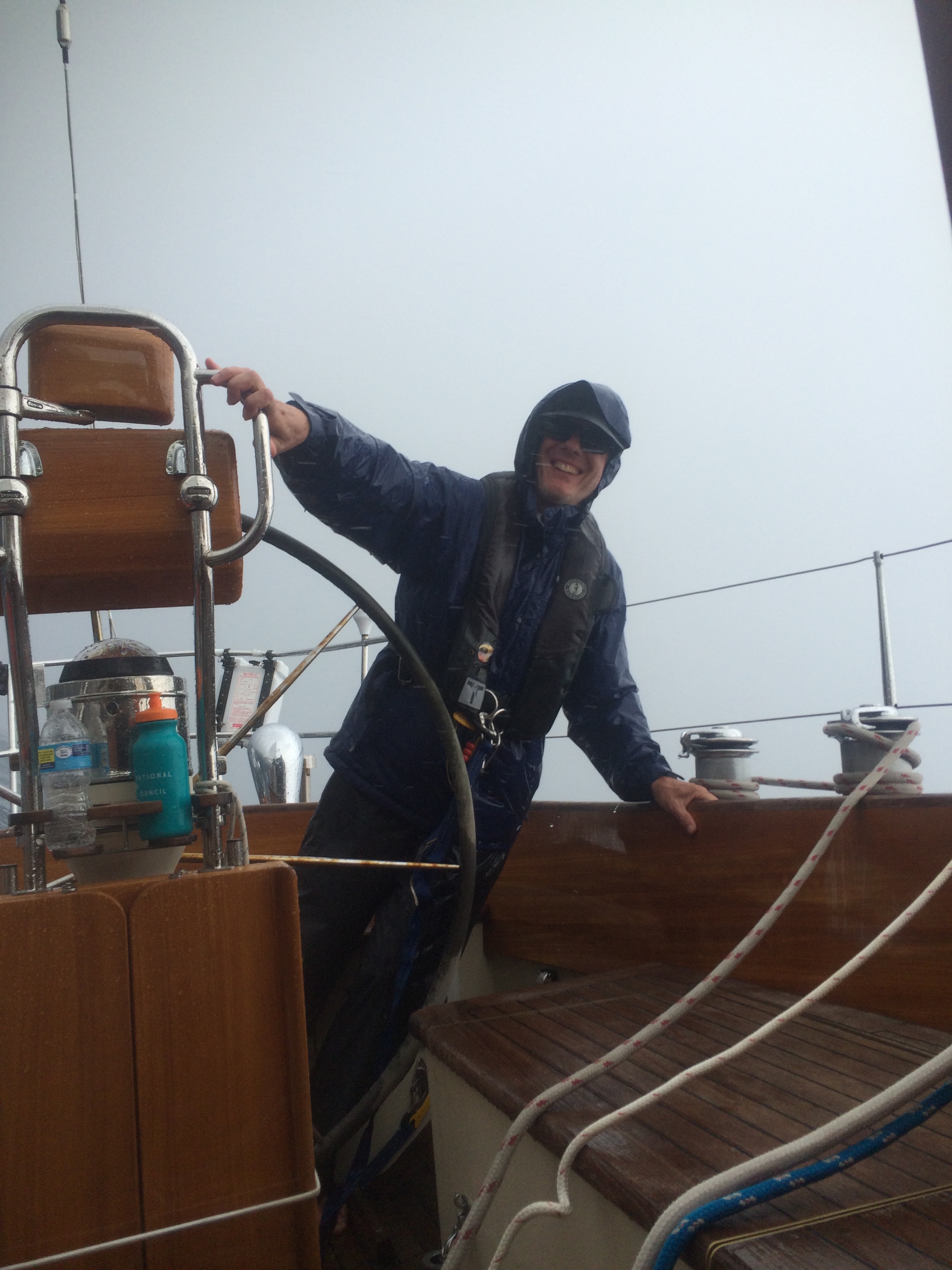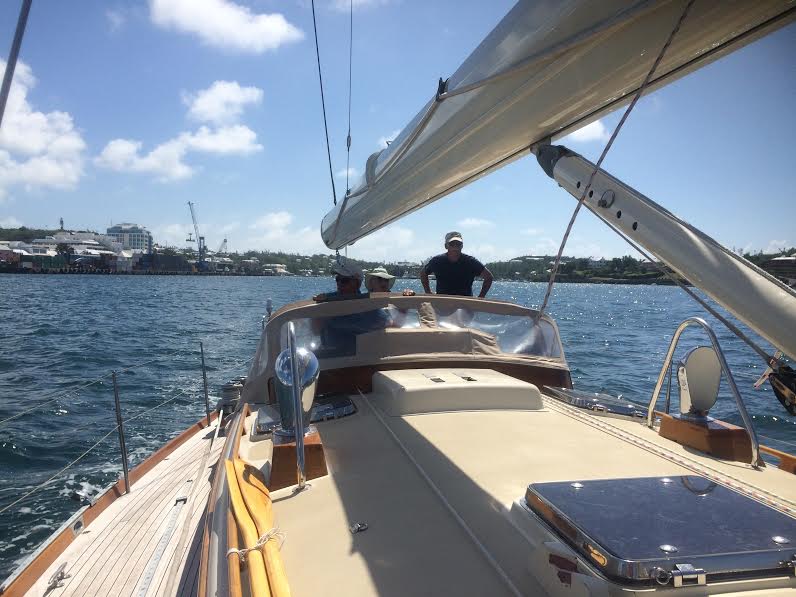Rescue at Sea (5th in a Series)
Part 5. “For me, when everything goes wrong – that’s when adventure starts.”* It was a little past noon on the fourth day when the steering went. We were 142 nautical miles from shore, with only a distant line of squalls to get past, after which we expected clear sailing until we reached Newport the following afternoon. We had navigated through the Gulf Stream’s heavy weather and come out into this morning’s clear, sunny skies and the quietest seas we’d experienced so far. Near the end of my watch (no, I wasn’t allowed up there by myself), a pod of young dolphins swam exuberantly around the boat.
I had just gone below to get some sleep, leaving the others on deck to discuss lunch, when without warning, the wheel, which was on autopilot, holding steadily to our north-by-northwest course, began rotating wildly. All efforts to steer manually failed, and we found ourselves adrift on an empty sea – 140 miles from the closest dry land and several thousand feet above the ocean’s floor. We hadn’t seen another boat in 72 hours.
Restive proved her mettle by neatly heaving to into the wind, while the collective brainpower tried to figure out what to do. Clearly, the problem was the rudder, and so Dave descended into the bowels of the boat to have a look.
“I’ve found the problem,” he called up from below, and as he scrambled back on deck, the once-distant squalls were closing in, the waves had swelled to over eight feet, and the wind was now blowing 20-30 knots.
“We have,” Dave said, “a major structural failure.”
*Yvon Chouinard
 Friends since 1963.
Friends since 1963.



